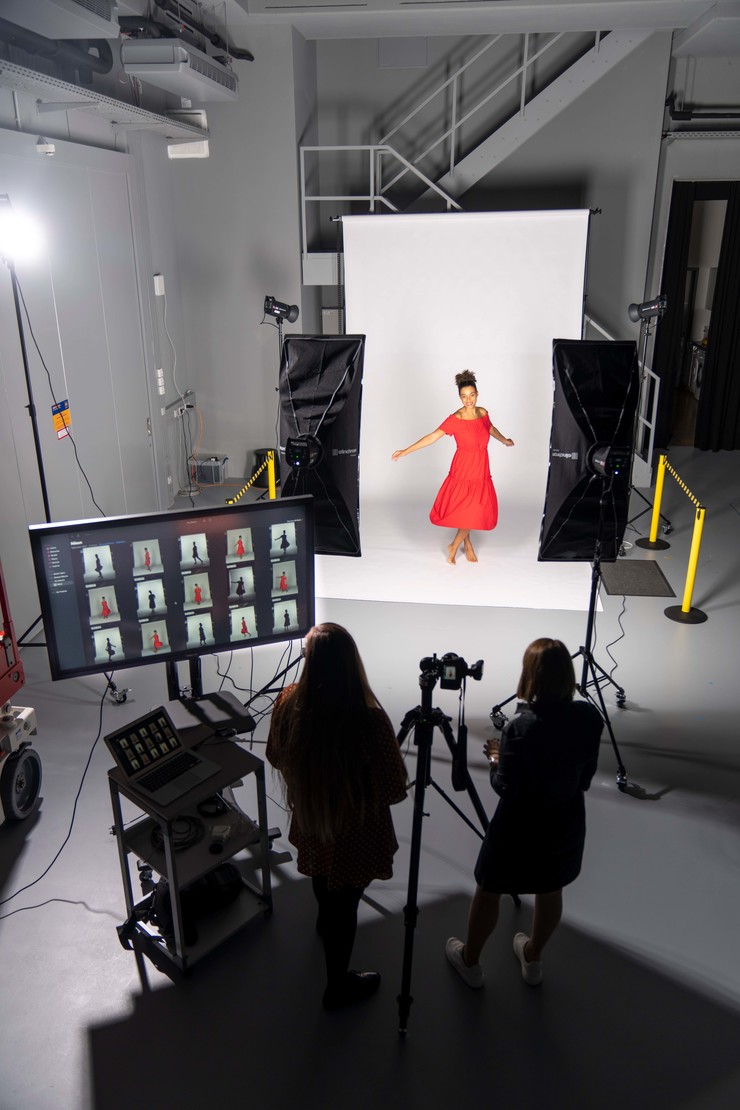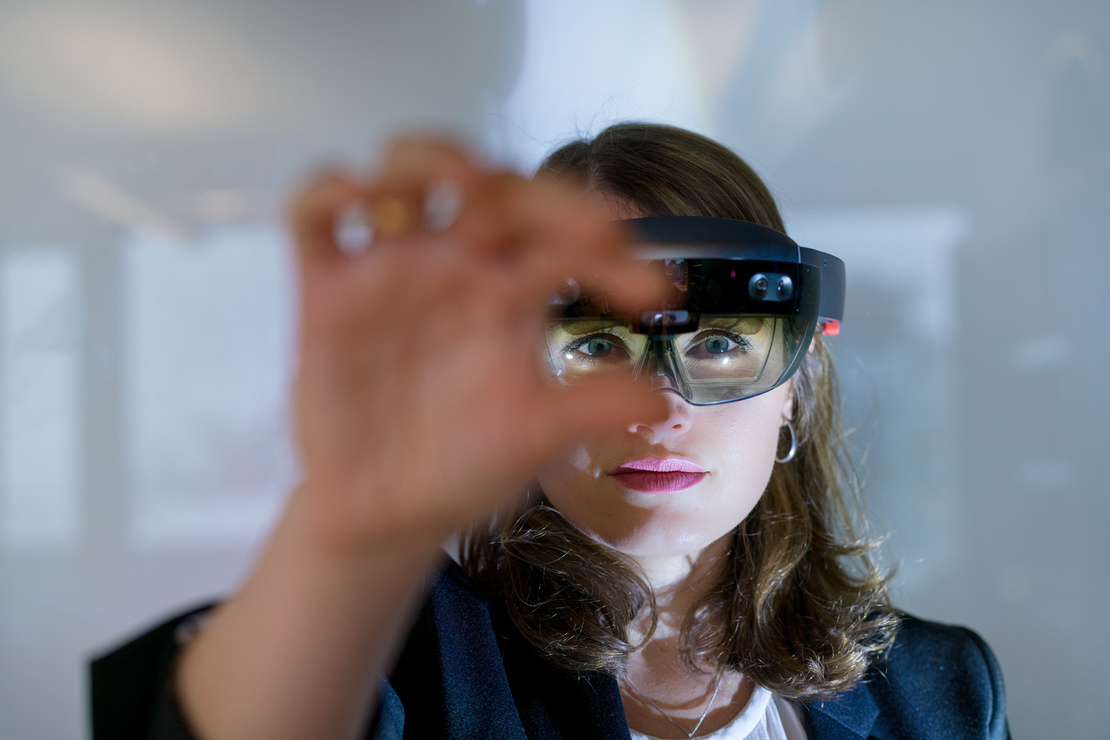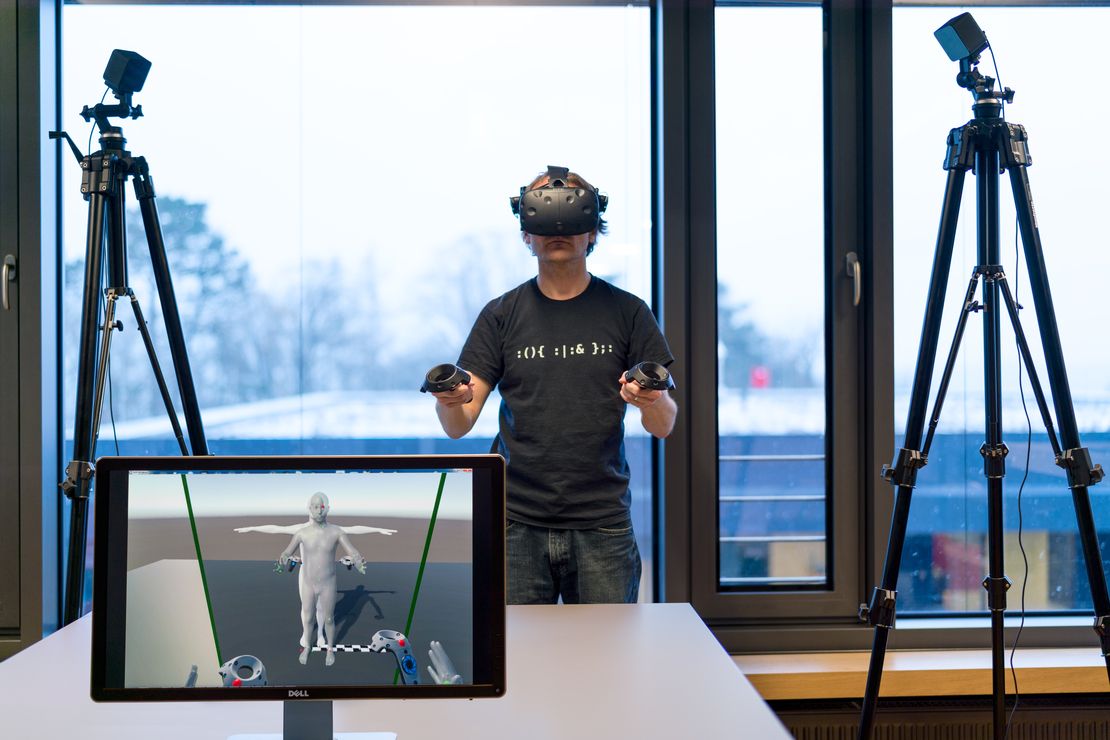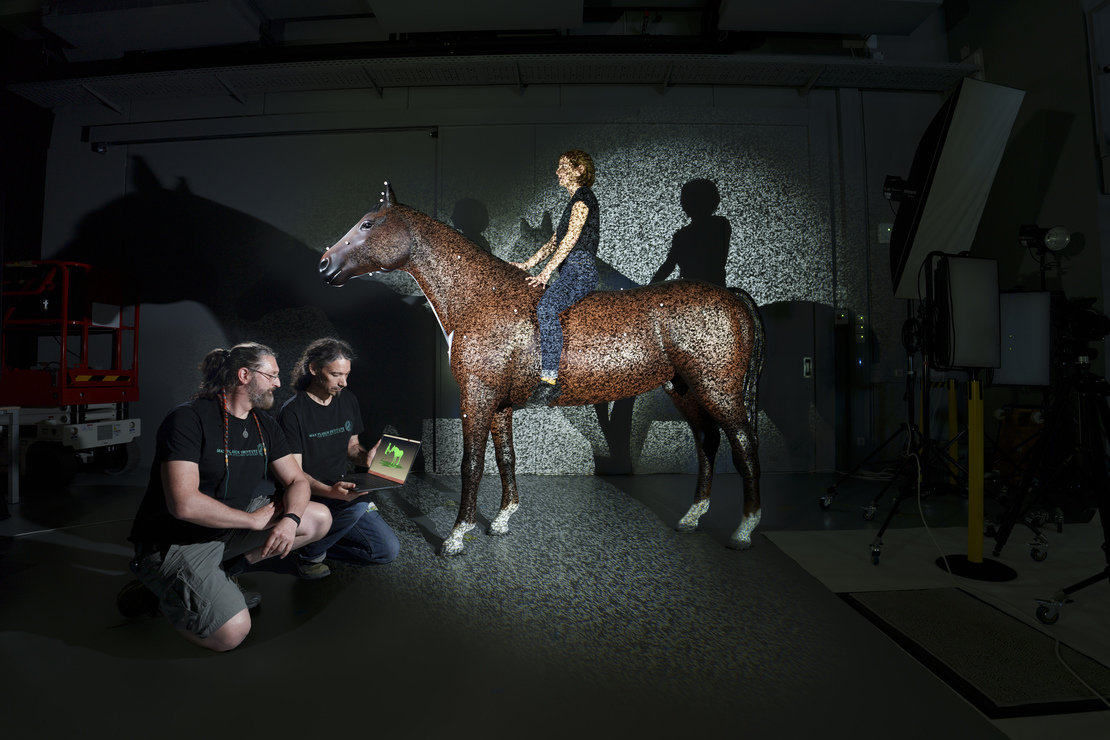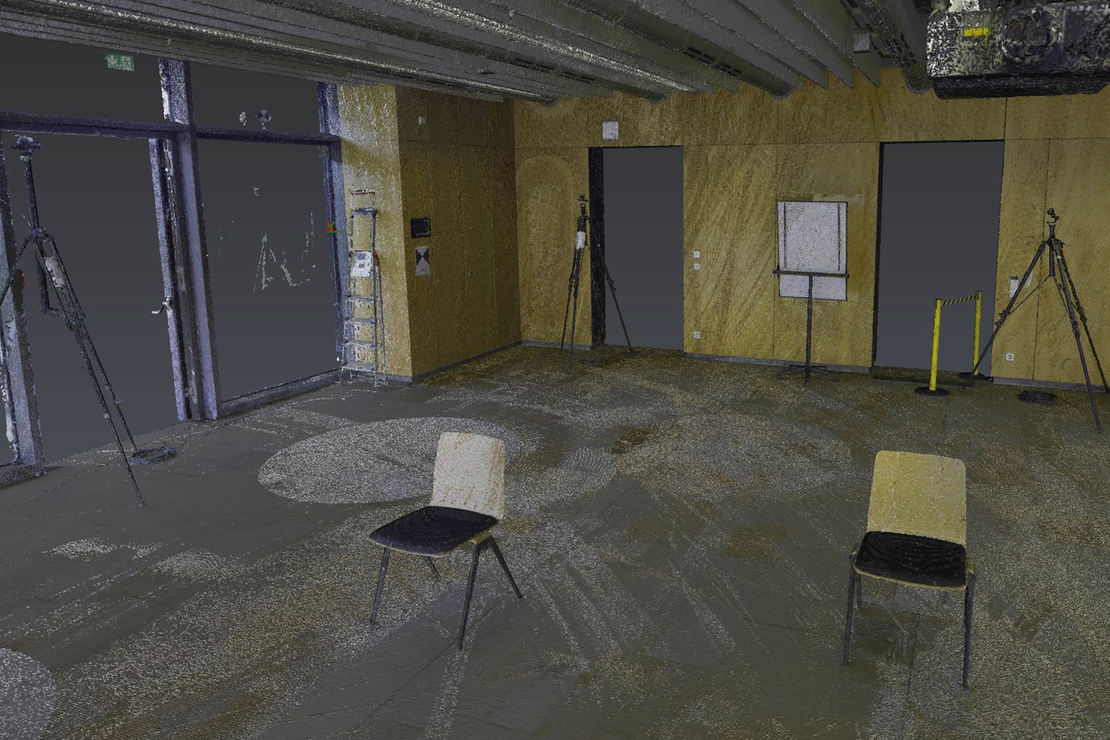Depending on the research needs, we combine multiple technologies to get the best data
Our Photo Studio Equipment allows us to capture images with high resolution and good lighting. Five Elinchrom Pro HD 500 flashes and a Nikon D600 DSLR with 24,3 MP enable a procedure called "Masking," where the person is automatically separated from the background.
With the Tobii Eye Tracker Glasses, we follow the eye gaze in real-time. Such data can help understand the intention of a person.
VR and AR headsets allow us to conduct experiments and virtual environments.
We use multiple Microsoft Kinect Azure devices for RGBD recordings.
Pressure Sensors Foot Soles provide information on a person's contact with the ground.
Audio Recording Equipment such as our Ceiling Array Microphone allows us to record sound in all our scanning systems.
The Artec 3D Hand Scanner allows us to quickly scan objects with high accuracy. The scans help us understand and model the interactions of humans with objects in their environment.
With our LEICA and Matterport Scanners we scan scenes in high quality for our outdoor and indoor captures. We can create virtual environments and investigate how people interact with the scene.
In the field of quadruped research, the horse is one of the most extensively studied animals, though data collection remains complex and time-consuming. Computer vision techniques enhance the extraction of animal movements, body shape analysis, and the assessment of internal organ conditions. In collaboration with the Veterinary Clinic at SLU in Uppsala, Sweden, we have developed a large-scale dynamic 3D scanner using 3dMD technology (Atlanta, GA) to reconstruct nearly the entire 3D shape of a horse in various poses. Additionally, we integrated a standard motion tracking system from Qualisys along with additional color cameras for texture capture. Our model is built on highly precise, anatomically accurate datasets.
